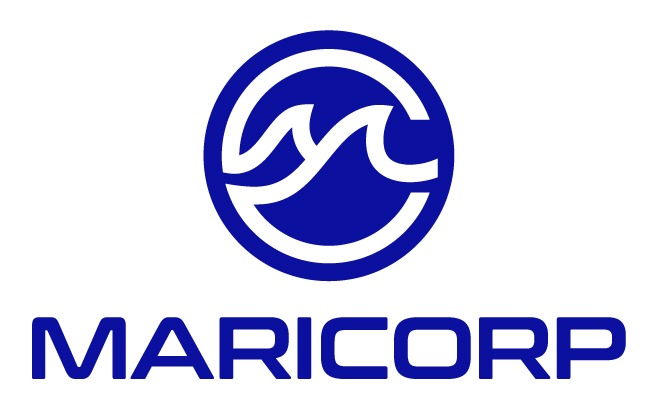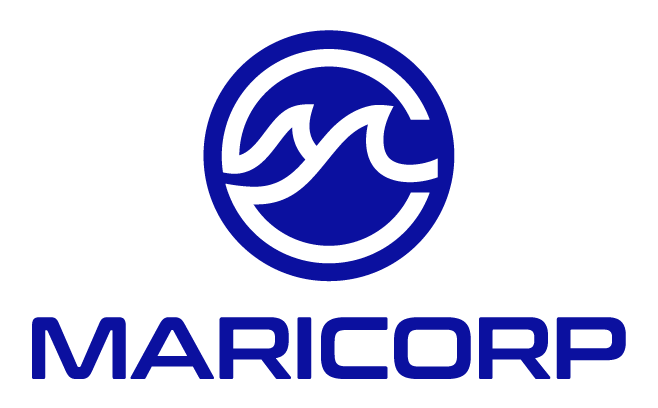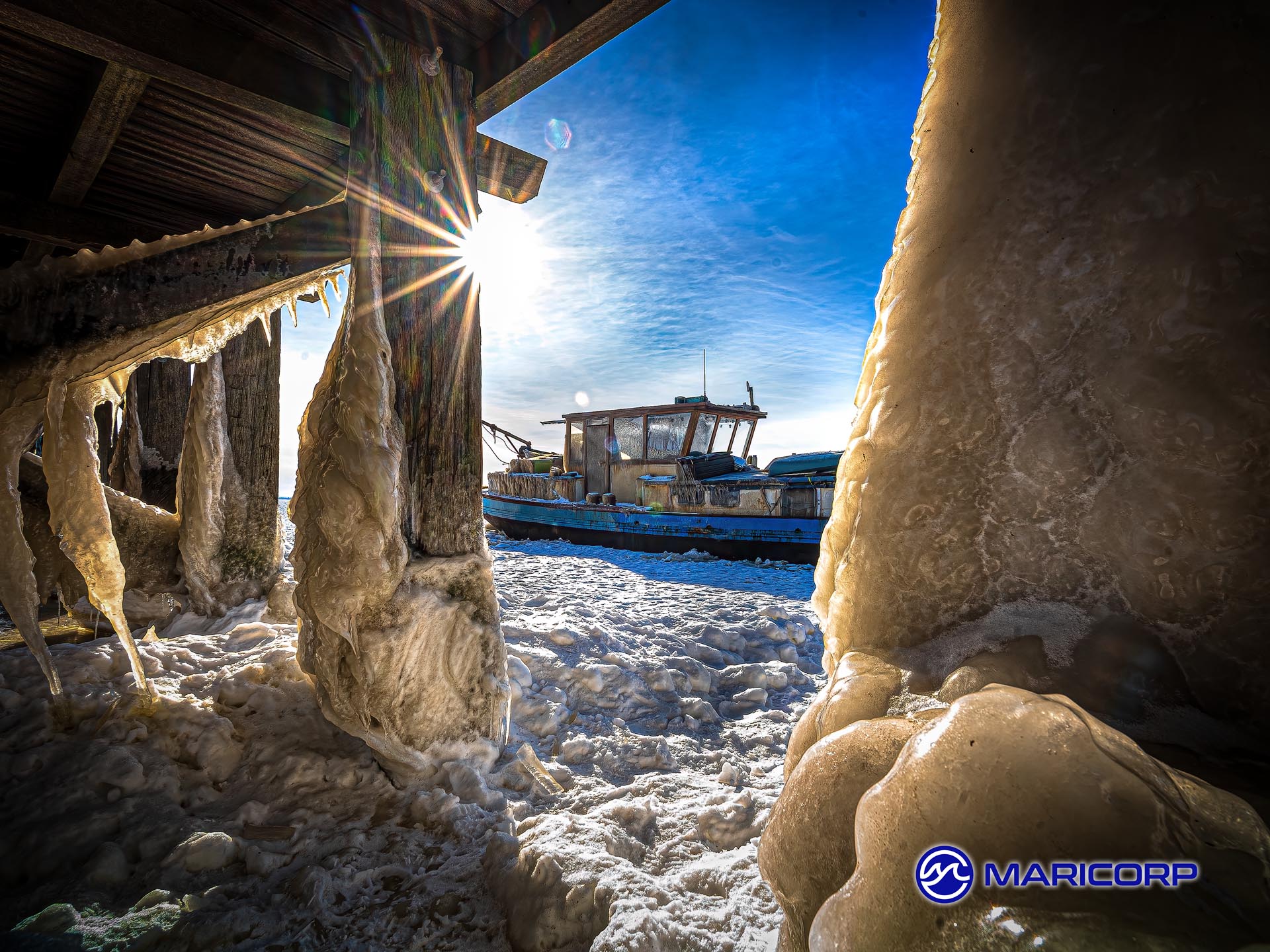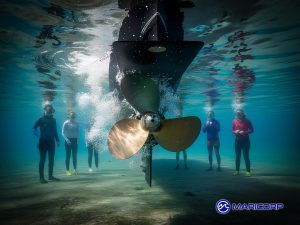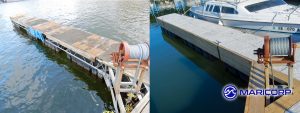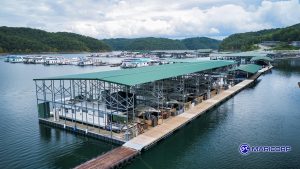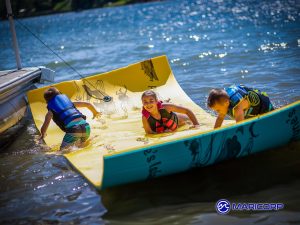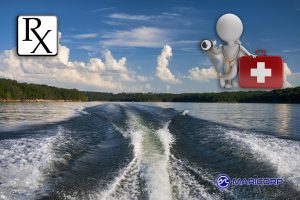Marina Deicing Systems: Is Your Marina Ready for Ice?
Just when temperatures begin to drop, inland and freshwater marinas must turn their attention to one of the most critical aspects of winter readiness—marina deicing systems. Ice buildup around docks, pilings, and submerged structures can cause extensive damage, increase liability, and compromise essential utilities. Without proper circulation, ice can shift, expand, or anchor to stationary objects, pulling on anchorage points and crushing dock hardware.
A well-maintained and properly placed deicing system is one of the most cost-effective tools for winter dock safety. Whether you operate in a freeze-prone basin or experience only intermittent icing events, this guide will help you evaluate your current system, plan preventive maintenance, and avoid common pitfalls.
Understanding Marina Deicing Systems
Not all deicers function the same way, and understanding the differences will help you determine the best fit for your facility.
Bubbler Systems: Also known as diffuser deicers, these systems release low-pressure air through weighted tubing installed along the bottom of the dock or slip. The rising air bubbles promote vertical water movement, bringing warmer subsurface water to the surface and preventing ice from forming. Bubblers are especially useful in shallow or sheltered areas, and they require a reliable air compressor with temperature-resistant lines.
Propeller Deicers: Often mounted on pilings, floating docks, or weighted below the water surface, these devices use motorized propellers to circulate warmer water across the area. Some models offer adjustable angles and timers for directional control and energy efficiency. Propeller deicers are often more effective in open or larger slip areas with deeper water.
Thermal Systems: In rare cases, marinas may use heated water lines or submerged heat exchangers powered by geothermal or electric sources. These are typically found in high-budget operations or experimental applications and are not widely adopted due to energy consumption.
Hybrid Designs: Some marinas use both bubblers and propeller units to cover areas with mixed depth and exposure. Strategic deployment helps reduce energy costs while maintaining consistent winter dock safety across all zones.
The type of marina deicing systems you select should reflect your regional climate, basin layout, slip occupancy, and power infrastructure. Systems that work well for fixed docks in a calm cove may not suit a floating pier near a river channel.
Inspecting and Maintaining Deicing Equipment
Before you rely on your system to protect assets through freezing conditions, a thorough inspection is essential. Like any mechanical setup, marina deicing systems are only as effective as their weakest component.
Visual Equipment Check: Start by inspecting motor housings, propellers, and mounting brackets for corrosion, barnacle growth, or plastic fatigue. Even freshwater installations are prone to mineral buildup or pest nests inside housing vents.
Line and Cable Condition: For bubbler systems, verify the integrity of the entire airline from compressor to outlet. Look for brittle spots, pinholes, or separation at joints. Weighted lines should remain submerged and evenly spaced. For propeller units, inspect all power cords for chafing, kinks, or grounding issues, particularly at the waterline.
Anchoring and Positioning: Make sure each unit is securely mounted and angled correctly. Even slight shifts in the off-season can affect the radius of circulation. Floating deicers should be tethered with freeze-resistant rope or chain that allows for water level changes.
Compressor and Timer Testing: For systems using air delivery, service the compressor according to the manufacturer’s fall maintenance checklist. Drain moisture traps, replace intake filters, and verify safety shutoffs. For electric propeller units, test timers and thermostats for cycle accuracy. Consider upgrading to smart timers or sensors if your current models are aging or lack precision.
Routine maintenance and early-season testing are essential for long-term winter dock safety. Addressing small mechanical problems now can prevent larger failures during January’s deepest freeze.
Placement Strategies: Coverage That Works
Once your system has been inspected and tested, the next priority is proper positioning. Deicing coverage is not just about placing units near high-traffic areas; it requires thoughtful mapping based on depth, current, exposure, and structure spacing.
Critical Zones: Start with areas most vulnerable to ice expansion damage—dock fingers, slip corners, gangway transitions, utility conduit paths, and anchoring points. If your marina has floating docks, pay close attention to cable attachment sites and piling guides, as ice pressure here can cause structural shifts.
Circulation Patterns: Proper circulation means more than just breaking surface ice. The goal is to keep water moving vertically and laterally to prevent formation altogether. In deep slips or large basins, one unit per zone may not be enough. Observe flow direction and radius during test runs, adjusting angles or adding deflectors if needed.
Avoid Over-Deicing: While it might seem safer to run as many units as possible, excessive deicing can create unsafe open water zones near walkways or public edges. Consider installing visual markers or low-profile safety signage to warn about thin ice areas or open water along the dock.
Staggered Activation: If your layout includes multiple units, stagger activation times to minimize sudden load on power supplies and avoid water stagnation. Units placed in shaded zones may need to run longer or start earlier than those exposed to sun or wind.
Your marina deicing systems will only perform as well as their placement allows. Documenting your layout now will make seasonal reinstallation or repositioning far easier next year.
Power Planning and Electrical Load Management
Running deicing systems through the winter months can add substantial demand to your marina’s electrical infrastructure. Before temperatures dip below freezing, verify that your service panels, circuits, and monitoring systems are ready to handle the load.
Dedicated Circuits: Wherever possible, each deicing unit should run on its own breaker. Avoid plugging units into circuits already serving lighting, pedestal outlets, or security systems. Label all breakers clearly and test each line individually to identify load tolerance.
Panel Capacity Review: If you’re adding more deicers this season, review your overall panel capacity with an electrician. In older marinas, panel upgrades or sub-panel installations may be necessary to meet consistent load demands during peak freeze periods.
Smart Controls and Scheduling: Modern deicing units often include thermostatic triggers or programmable timers. Set systems to activate just before local freeze points, rather than running continuously. This reduces energy consumption and extends the lifespan of your equipment.
Monitoring and Alerts: For marinas operating with minimal winter staffing, consider remote monitoring tools that track amperage, temperature, and cycle patterns. Solutions like smart marina platforms or Falco’s sensor network can provide alerts if a system goes offline or begins underperforming—giving you time to respond before ice becomes a threat.
A strong power plan is the backbone of effective winter dock safety. Planning now helps prevent circuit overloads and spotty performance when freezing conditions hit their peak.
Environmental and Regulatory Considerations
While marina deicing systems serve a protective function, they also interact directly with the aquatic environment. If not properly installed or monitored, they can create unintended risks to wildlife, adjacent properties, or public access areas. Understanding applicable environmental and regulatory expectations helps keep your operation compliant and community-friendly.
Discharge and Ice Flow Impact: In some regions, continuous deicing can alter local ice flows in ways that affect neighboring docks or shoreline erosion. Circulating open water can undermine natural freeze zones and disrupt sediment, especially in shallow coves or basins with minimal current. Take care when locating units near property boundaries or public shorelines.
Wildlife Hazards: Open water can confuse overwintering birds and mammals that rely on consistent ice coverage. If your marina borders known habitat zones or winter migratory paths, consider installing safety markers or lights to minimize risk. Avoid placing units near nesting sites or seasonal access points.
Compliance with Local Rules: States and municipalities often have guidelines governing marina winter operations, including use of deicing systems. These may involve operational hours, location restrictions, or signage requirements. For example, Minnesota and Wisconsin both mandate warning signage for artificially opened water during winter months. Always check with your local governing agency or USACE contact to confirm relevant policies.
Noise and Nuisance Considerations: Air compressors and motorized units can generate low-level noise that carries farther in cold air. When planning system layout, consider neighboring homes, condos, or RV parks. Timers and smart controls can help you reduce operating hours while still maintaining effective coverage.
Responsible use of deicing equipment is an extension of good marina citizenship. Taking steps to reduce environmental and regulatory impacts protects not only your docks but also your standing in the community.
Safety for Staff, Boaters, and the Public
Even the best deicing strategy can create safety hazards if not paired with clear communication and preventive planning. Open water, slick surfaces, and electrical components all present unique winter risks—especially in low-visibility or low-traffic conditions.
Signage and Visibility: If deicing will create areas of thin ice or open water, post warning signs at dock entrances, walkways, and service buildings. Use reflective materials or solar-lit signs to ensure visibility during early sunsets and overnight hours. Floating barriers or low-profile buoys can also be helpful in high-traffic slips.
Staff Training: Before your system is fully activated, walk your staff through emergency shutoff procedures, basic system troubleshooting, and identification of electrical faults. Confirm that all employees understand how to inspect units safely and when to escalate concerns to maintenance or electrical professionals.
Winter PPE and Access Gear: Provide anti-slip footwear or traction aids for staff working near icy areas. Maintain portable ladders, rescue throw rings, and ice picks in visible locations. If your team conducts manual inspections throughout winter, equip them with insulated gloves, lighted vests, and radios or other communication tools.
Public Access Boundaries: In mixed-use facilities, make sure deicing zones are clearly separated from public-facing paths, observation decks, or shoreline attractions. If certain piers or walkways are closed for winter, mark them accordingly and inspect barriers regularly for shifting or damage.
Marina deicing systems are only part of the winter dock safety equation. Preventing slips, confusion, and electrical exposure ensures that your risk management strategy is complete.
Documentation, Monitoring, and Spring Transition Planning
Once your deicing systems are active, the work isn’t over. Ongoing monitoring, consistent documentation, and a solid plan for spring shutdown all play a role in making your winter strategy successful year after year.
Daily or Weekly Check Logs: Even if your system is on a timer or thermostat, conduct routine checks throughout the winter. Use a logbook or digital form to record operational status, ice conditions, motor behavior, and visual inspections. If units are spread across multiple zones, note the specific area and condition during each check.
Mid-Season Adjustments: As weather patterns shift, your system layout or schedule may need to change. A warm spell followed by a deep freeze can introduce unexpected challenges. If you notice uneven ice coverage, repositioning or re-anchoring units mid-season may prevent unnecessary strain on pilings or gangways.
Remote Monitoring Tools: For marinas without full-time winter staff, install systems that send alerts for unit failure, temperature drop, or abnormal energy usage. These tools can also help track operational efficiency and provide useful data for future seasonal planning.
Spring Shutdown and Storage: As ice-out approaches, inspect each deicer for wear, corrosion, or housing damage before removal. Clean units thoroughly, coil lines without kinks, and store equipment in dry, temperature-controlled areas when possible. Label storage locations and any needed repairs so that fall setup is faster and better organized.
Post-Season Review: After shutdown, review your documentation to identify patterns or problem areas. Were there zones with poor circulation? Did any units fail repeatedly? Use this information to improve next season’s cold weather strategy or submit recommendations for equipment upgrades.
Deicing isn’t just a single-season task. It’s part of a larger commitment to winter dock safety, operational resilience, and asset longevity. With the right systems, planning, and follow-up, your marina will be well protected—no matter how long the freeze lasts.
Related Articles:
Additional resources and reading:
- How Does a Dock Bubbler Work
- De-icing 101 – Back to the Basics
- De-icing Tips and Why Proper Installation is Important
- Dock De-Icers
Additional Fall Maintenance Articles:
*Sign up for our free newsletter “Marina Management Journal” so you can stay up to date
About MariCorp
Maricorp is one of the largest floating boat dock manufacturing and construction companies in the United States, specializing in galvanized steel floating docks and boat lift systems. With projects spanning coast-to-coast, Maricorp provides marina consultation and design, marine construction, marina repair and renovation, and boat dock disaster response and demolition.
